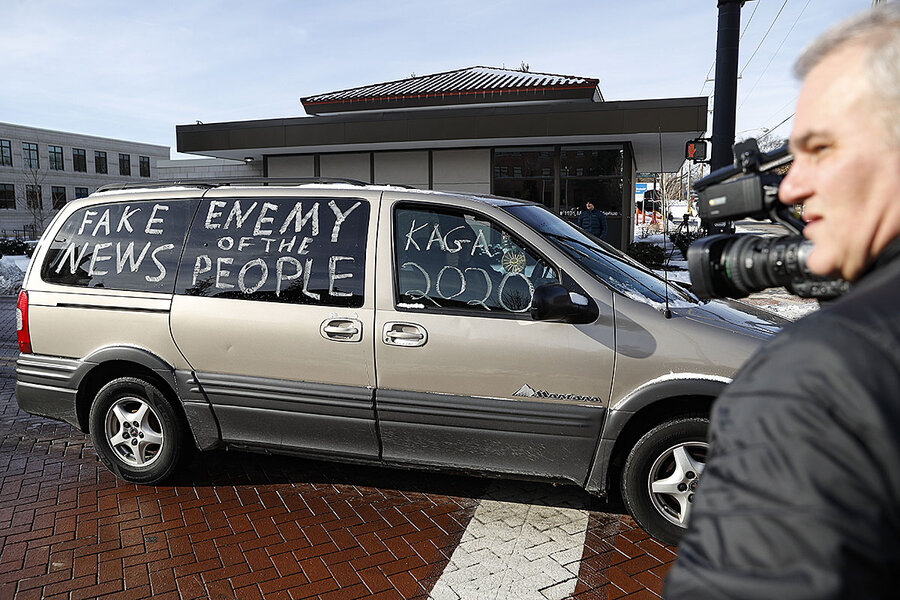Covington clash: Everyone’s got an opinion. Maybe that’s the problem.
Loading...
“People who judge me based off one expression.... They’ve gone from there to … labeling me as a racist person, someone that’s disrespectful to adults – which, they’ve had to assume so many things to get there, without consulting anyone that can give them the opposite story.”
That was Covington Catholic High School student Nick Sandmann, speaking on NBC’s “Today” about the infamous viral video that showed him in a discomforting face off with a chanting Native American elder in front of the Lincoln Memorial. Over the weekend, critics rushed to condemn Mr. Sandmann’s “smirk” and other actions by his teenage classmates, who had traveled from Kentucky to Washington for an anti-abortion march.
But then, longer videos of the encounter emerged – showing a more complicated scene, involving other, more antagonistic-seeming protesters. Critics rushed to condemn the boys’ original critics, many of whom rushed to apologize. And then came a backlash to the backlash, as others argued that the boys’ behavior still shouldn’t be excused.
President Trump called the Covington students “symbols of Fake News.” And in a way (though not in the way he meant), he’s right – because the whole episode is symptomatic of a real challenge for both the media and our society at large.
“The nation’s culture is now enmeshed in a new technology that we don’t yet know how to control,” writes the New York Times’s David Brooks. “In this technology, a single moment is more important than a life story. In this technology, a main activity is proving to the world that your type is morally superior to the other type.”
There’s no question the “outrage machine” of social media lends itself to stereotypes rather than nuanced portrayals. It also tends to elevate small events – minor mistakes or instances of regrettable behavior by individuals who are not public figures – to the level of a national conversation.
Sometimes these conversations can result in good – if they lead to more tolerance and understanding of other viewpoints. But more often, it seems, everyone simply points fingers and moves on.
And the consequences can be severe. The boys' school has been forced to close temporarily and some of them have reportedly received death threats.
“In hindsight, I wish we could have walked away and avoided the whole thing,” Sandmann said. It’s advice those poised to jump into the online fray might heed as well.
Let us know what you’re thinking at csmpolitics@csmonitor.com.








